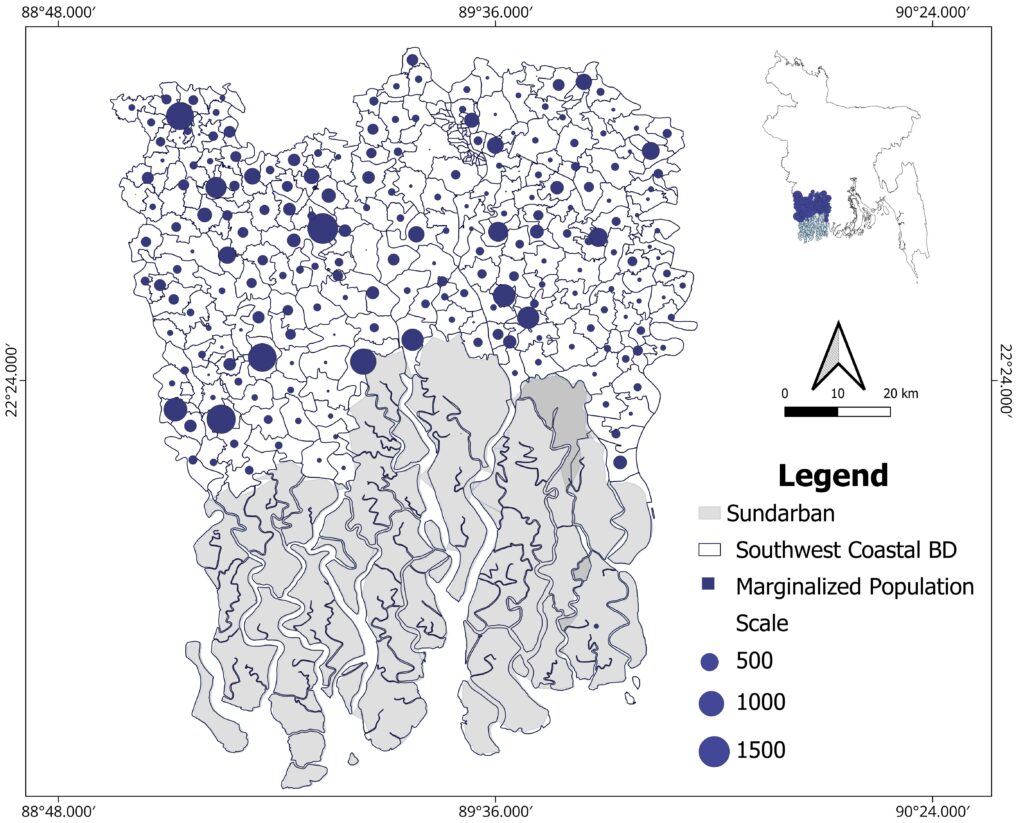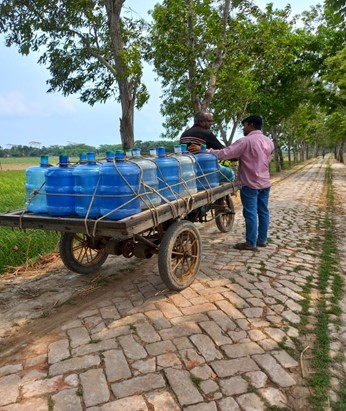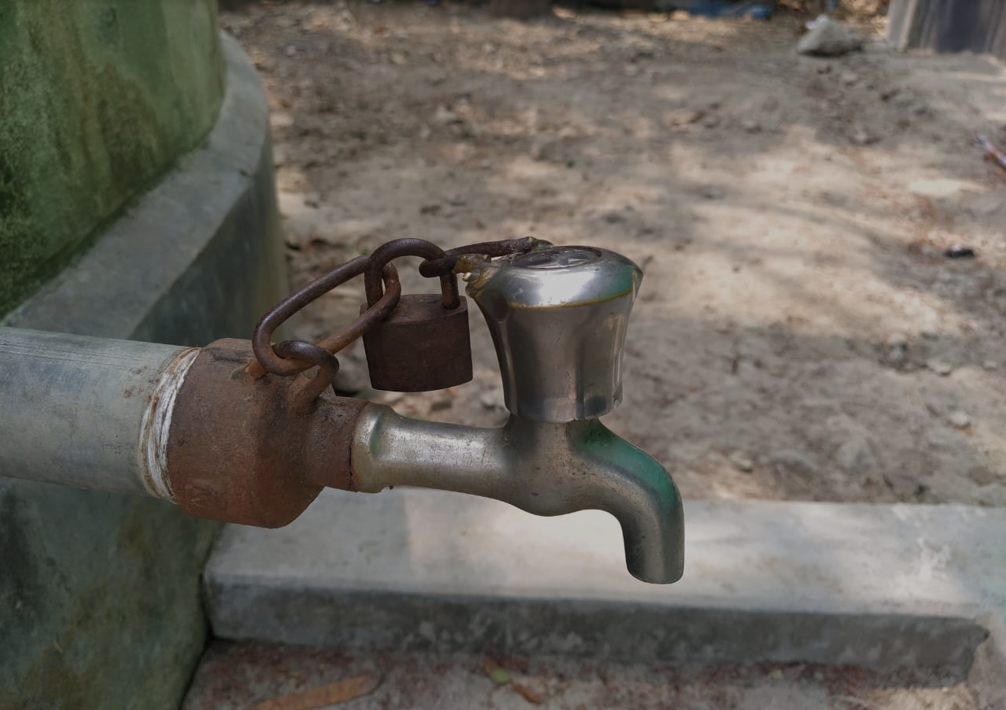by Mahabuba Hasan Lima, Research Associate, Bangladesh University of Engineering and Technology
Drinking water scarcity is a common experience for people living on Bangladesh’s southwest coast. The causes relate to the complex hydrological setting, with saline intrusion into both surface and groundwater. However, the severity of the water crisis varies from one community to another. The population here is diverse and includes socially disadvantaged people and ethnic minorities who deal with social inequity in every sphere of their lives – access to safe water is no exception.
Leave No One Behind (LNOB) is a promise of the 2030 agenda for Sustainable Development Goals (SDGs). Reaching SDG 6.1, which calls for affordable and safe drinking water for all, requires addressing socioeconomic equity as a top priority. Several articles have documented the nature and dimensions of water scarcity among the general population on the southwest coast but there is a lack of studies about how marginalised communities are dealing with water shortages. This issue is being addressed by the research team in the REACH programme’s coastal observatory in southern Bangladesh where we have conducted a study to assess the present state of drinking water security among marginalised populations. Our goal was to learn about the different types of drinking water options they use and the socio-economic and hydrological issues associated with them.
Five unions, from two southwest coastal districts (Satkhira and Khulna), were chosen as study sites based on the severity of the drinking water crisis, availability of different types of drinking water technologies, and the locations of various marginalised communities. We concentrated on the quality of drinking water and related health concerns in one of the five unions, Banishanta. We carried out thirty-five in-depth interviews with members of the marginalised community, twenty-one focus groups with the selected groups that were marginalised, eleven key informant interviews with Pond Sand Filter and Reverse Osmosis plant operators, government and non-government officials assisting marginalised groups, water services and community health. Our study highlighted the unique challenges faced by the marginalised community in obtaining drinking water, as well as the health hazards linked with it. In this piece, we provide an overview of water security challenges, with a particular emphasis on the health risks to populations associated with water quality.
Marginalized communities of the southwest
Exclusion, deprivation, inequality, and vulnerability are associated with marginalization, which keeps a person or group in a lower social standing, treats them unfairly in comparison to others, and restricts their access to resources and authority.
Based on the nature of deprivation, the marginalised communities in the southwest coastal region can be categorized into different types which include the socio-occupational (Rishi, Kahar, Harijan, Kaiputra, traditional fisher folk, sex workers), cultural (religious minor like Hindu, Christian) and the ethnic community (Munda). Rishi communities, in particular, have long been marginalised due to their low religious caste and the kind of work they undertake for a living, such as sweepers or shoemakers. These kinds of jobs are considered unclean due to the untouchability norms practiced in society.

Spatial distribution of marginalised populations in southwest coastal Bangladesh. Map based on data provided by the Department of Social Services, Government of Bangladesh. Marginalized communities include ethnic and religious minorities, sex workers, people with disabilities, socio-occupational groups such as traditional fisher-folk.
Access to safe water and social deprivation in the face of a changing climate
Communities who reside in climate-vulnerable southwest coast are frequently hit by cyclones and tidal surges which increase groundwater salinity, making it unusable. Focus Group Discussions with marginalised groups highlighted that Pond Sand Filters (PSFs), Rainwater Harvesting Systems (RWHS), and Reverse Osmosis (RO) plants are the primary readily-accessible sources. High salinity makes shallow tubewells unsuitable for consumption. Water access is restricted by inadequate distribution of RWHS tanks and frequent issues with PSF functionality. Affordability of water is a major concern, for example purchasing RO water costs 10 percent of their monthly family income. The majority of people thus rely on pond water from community ponds, located far from their homes. Owners of household ponds located nearby restrict access due to untouchability norms. People who reside close to the river collect water from the river for drinking during high tide and in the morning as the ponds are located far.

Water from a RO plant being transported for sale at a price of 0.5 BDT per litre in Banishanta, Dacope, Khulna. Transport costs will also be added. (Photo by Hasibul Hasan)
Ingestion of contaminated water
Samples from different drinking water sources in Banishanta showed high contamination suggest in river and pond water. Communities using these waters for drinking run the risk of developing diseases. Community members mentioned having suffered from diseases including diarrhea, dysentery, skin disorders, etc. Children are especially affected by these illnesses. According to the community health service provider representatives who took part in Key Informant Interviews, the number of patients with such illnesses increases dramatically during the monsoon as rainwater carries animal excreta to the drinking water ponds and river.
Workers in Community Health services expressed concerns over service provision and community awareness. Healthcare facilities lack staff and medical supplies . Lack of knowledge on health hazards caused by poor water quality is worsening the situation. Those who have rainwater harvesting systems fail to maintain them properly and often dirt is found in the tank. People are regularly using contaminated sources as they don’t have other options. They consume it even during the time they are suffering from waterborne illnesses.
Need for strategic action
Drinking water studies in southwest coastal Bangladesh do not sufficiently address societal barriers to getting safe drinking water. The needs and challenges faced by marginalised populations must be taken into account to ensure safe drinking water for all kinds of communities, leaving no one behind.
Whilst investment into new rural water infrastructure has increased installation of decentralized water supply, it will not mitigate the rural drinking water crisis unless management aspects and drinking water quality concerns are also addressed. Strategic action should be taken during investment to ensure regular and periodic maintenance of infrastructure and routine testing of water quality. The needs of marginalised groups should be taken into consideration when making investment decisions. Marginalised communities’ concerns should be translated into actionable research and incorporated into policy briefs aimed at decision-makers. Costly technologies like RO are not suitable choices for the majority of marginalised people; therefore, it is imperative to investigate alternative options in order to lessen the water problem and the health risks that it entails. In addition, strategies should also consider spreading knowledge about water quality-related health concerns among the communities. Further research on the health concerns linked with water quality is necessary. Lastly, in order to change the societal norm of untouchability, social awareness also needs to be increased.

